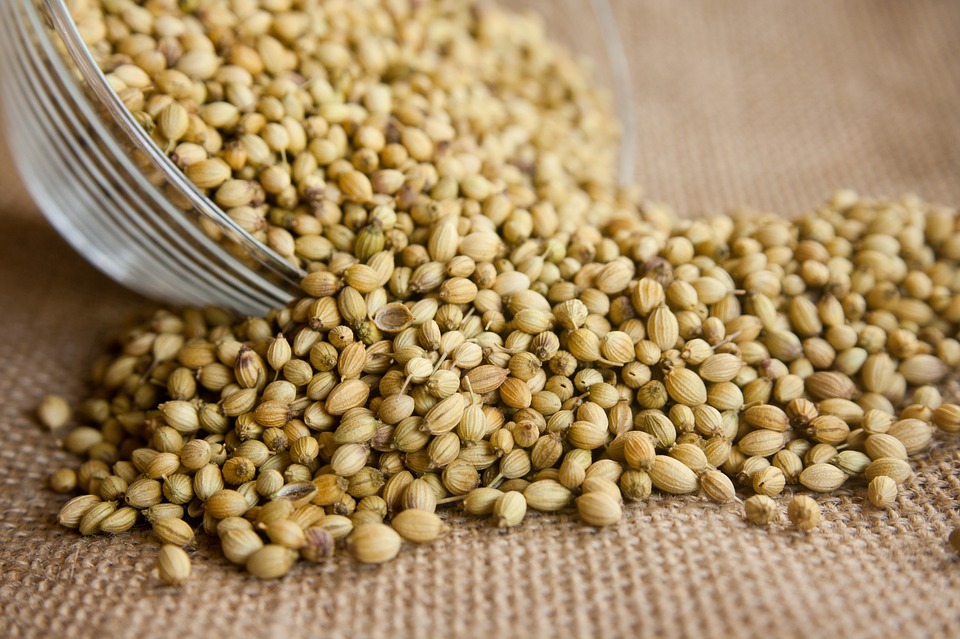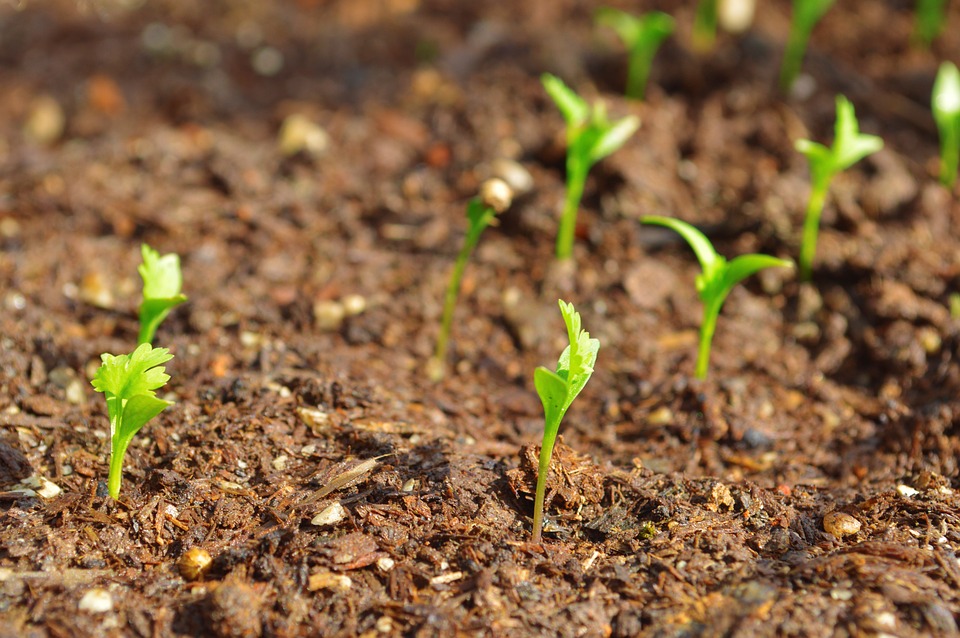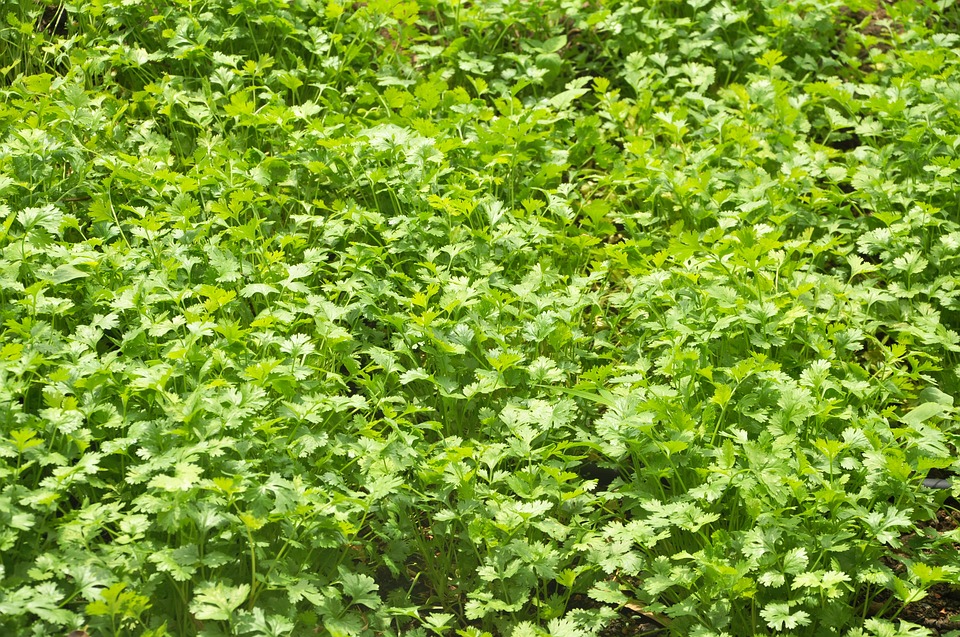A step by step guide for growing Cilantro
Today, we learn the growing Cilantro in pots, indoors, in the backyard, on the terrace, in the balcony along with planting from seed, Cilantro plant care, harvesting techniques, planting cilantro in summer, and winter. Cilantro which is scientifically called Coriandrum Sativum is a herb which has deep green leaves which are savory. These are harvested in a fresh manner and are used for flavoring of a large variety of Asian and Latin recipes. Cilantro is also called as Cilantro or Chinese Parsley or Coriander Cilantro is simple to grow and you can also plant the seeds directly in the soil immediately after the danger of frost is passed or you can also consider growing them in pots.
Growth of Cilantro in a garden:
- When coming to the growing temperatures of cilantro, the perfect time for the plantation of Cilantro is completely based on the location you are residing in. Cilantro will not be able to survive in the climatic conditions which are frosty, but it will not even like the climatic conditions which are extremely hot too. In the climatic conditions which are temperate, the perfect time to start the plantation of Cilantro is at the end of the spring. In most of the tropical climatic conditions, Cilantro will grow its best when the climatic conditions are cool and fry like autumn.
- You can also succeed if you start growing Cilantro in summer end and let it grow at the time of autumn.
- If the climatic conditions become too hot, the Cilantro bolting will start which means that they will start flowering and going to seed. So select the time of plantation in a wise manner. To get a very good start depending on the climate, you can try to start the seeds in indoor locations and then prefer transferring them outside as you see improvement in the climatic conditions.
Preparation of area for the plantation of Cilantro in your garden:
- You can choose a soil patch where your Cilantro will receive full exposure to the sun. It will be able to resist some amount of shade in the areas where the sun will get extremely hot during the day time. The soil for the plantation of Cilantro should be well-drained and light and the pH of the soil should be in between 6 to 6.8.
- If you like to fertilize the soil before the plantation of Cilantro, you can make use of a shovel or space for working at least 3 inches of organic mulch like leaves which are rotten, compost or manure into the soil’s top layer. If you are making use of manure as an organic mulch, ensure that the manure is aged or composted for a minimum of 90 days so that it will not burn the Cilantro plants which are young. The area has to be raked to make it smooth before the plantation.
Plantation of Cilantro seeds:

- The seeds have to be sown at a depth of about ¼ inch and the distance between the seeds should be up to 6 to 9 inches from each other and when you are planting them in rows in your garden, make sure that you are maintaining a distance of 1 foot in between the seeds. The seeds of Coriander will require a lot of moisture for the process of germination. So, ensure that you are watering them in a frequent manner. They will require about one inch of water on a weekly basis. The seeds of Cilantro will get germinated in about 15 to 20 days.
- As the Cilantro is a plant which will grow in a quick manner, you will have to start planting a new set of seeds for every 15 to 20 days for making sure that you have a fresh Cilantro all across the growing season.
You may be interested in How to Grow Caraway from the Seed.

Care and maintenance of Cilantro:
- As soon as the seedlings of Cilantro reached the length of 2 inches, you can start fertilizing them with organic fertilizer or even compost. Make sure that you are being careful about over-fertilizing the Cilantro plants, you will only require about a ¼ cup of fertilizer for every 20 feet of the growing space.
- Once the establishment of the Cilantro plants is done, they will not require much water. You will have to aim for keeping the soil in a damp state, but make sure that it is not soggy as Cilantro is a herb which grows in dry climatic conditions.
Harvesting Cilantro:

- Cilantro can be harvested by cutting single stems and leaves starting from the plant’s base at the ground level when the stems are grown up to a length of 6 inches. You can make use of the shoots which are fresh while cooking. Make sure that you are not using the leaves which are old as they will be bitter in terms of taste.
- Make sure that you are not cutting off beyond one-third of the leaves all at once because this will cause weakness to the plant.
- Once the harvest of the Cilantro leaves is done, the Cilantro plant will continue growing for a minimum of three cycles.
- After that, gradually, the Cilantro plants will start flowering. When this takes place, the plant will stop to give rise to new shoots with leaves which are edible. Here, few people will remove the flowers expecting that the plant will give more leaves.
- Anyways, if you wish to harvest the seeds of Coriander, you will have to leave it until flowering. As soon as the flower gets dried, you can harvest the seeds of Cilantro which can be further used for cooking purposes.
- As an alternative, you can also let the seeds fall in a natural way to the ground. Here is where the Cilantro plant will grow by itself by giving you more numbers of Cilantro plants in the next season. You can also store the seeds which are dried and start planting them in the next season of growing.
You may be interested in Growing Hydroponic Cucumber.
How to Grow Cilantro in a pot:
- Select a container which has a width of a minimum 18 inches and a depth of up to 10 inches. Cilantro will not be able to take the transfer, so the pot which you choose has to be large enough to bear the fully grown Cilantro plant.
- The pot has to be filled with soil which is well and fast drained. You can also add in some amount of fertilizer if you wish. The soil has to be moistened by making use of a little amount of water until it becomes damp, but make sure that it is not becoming soggy. The seeds have to be sprinkled in a slight manner on the soil and disperse them in a uniform way. Now cover with an additional ¼th inch of the soil.
- Coriander seeds will require complete sun for the purpose of its growth. So make sure that you are placing it in a sunny window-sill. The windows which are facing towards the south will give more amount of sunlight and best environmental conditions for your Cilantro. The seeds will undergo the process of germination within a week to 10 days.
- The soil has to be kept in a moist condition by making use of a spray bottle to mist the soil in a light manner. If you are pouring water onto the soil, there are chances that the displacement of seeds takes place.
- As soon as he Cilantro stems have reached a length of 6 inches, it would be ready for harvest. You will have to remove ⅔ rd of the Cilantro leaves on a weekly basis as this will motivate the plant to continue growing. In this manner, it is possible for harvesting up to four produces from a container.
You may also check How to Grow Mehndi at Home.
Facts of Cilantro:
- The cilantro or coriander can be grown indoors, backyard, outdoors, in pots, containers, raised beds, square foot gardens, greenhouses, polyhouse, shade net, balcony, and on the terrace.
- The Cilantro plants have to be watered until the water present in them comes out through the drainage holes. The soil has to be monitored in a frequent manner, but When you are growing Cilantro indoors, it has to be watered when the soil is dry. This will occur more frequently in the months of summer. For plantation of Cilantro in the indoor locations, it is essential for the plant to receive 4 to 5 hours of sunlight per day.
- The Cilantro has to be harvested when it is fully grown. Similar to growing basil, Cilantro will also regrow its roots and will grow into fresh plants when you replant them. Within a very few months, you can see a fully grown Cilantro plant. The Cilantro leaves are harvested whenever required, but make sure that you are not stripping a stem from all the leaves at once.
- Prior to the plantation of Cilantro in the ground, you will have to start the preparation of Cilantro for increasing the chances of germination. You will have to crush the seed husk in a gentle manner by holding the seeds together. The Cilantro seeds have to be soaked in water for about 24 to 48 hours. Then you will have to remove them from water and let them get dried.
- The Cilantro seeds will undergo the process of germination within 15 to 20 days and start the growth of leaves very quickly. As the climatic conditions get warm, the growth of leaves will give rise to flowers, which will, in turn, give rise to seed heads. For harvesting Cilantro, remove the seed heads and keep them in a paper bag.
- There are some amount of herbs which can be grown from the seeds which are bought from any of the grocery store present in your locality. Cilantro, fennel, and dill are also one among those seeds. If they undergo the process of germination, you will have to start the plantation and grow the seeds as you wish.
- The Cilantro leaves will need about 2 to 2 ½ months to reach the size which is required for the first harvest. You can start pruning the outer leaves from the Cilantro plant once it will reach the length of 6 inches. Make sure that you are not cutting the inner leaves. Rather than that, keep all these on the plant so that the cilantro keeps growing and produces until the flowering takes place.
- Generally, a herb is called “Cilantro” when you are growing it for its leaves and it is called as “Cilantro” when you are growing it for its seeds. Cilantro is an annual plant, but sometimes people often mistakenly consider it as a perennial in climates which are frost-free as it will self-seed.
- Sometime the cilantro leaves will turn yellow and it is an indication of lack of nutrients, especially nitrogen. You will have to start providing the herb with a fertilizer which is balanced with an n-p-k ratio 14-14-14, one time a week when you generally water the plant. The fertilizer has to be diluted to half of its strength for the prevention of burning caused by fertilizer which can also lead to yellowing of leaves.
- When cilantro is kept in changing like extremely hot weather or soil which is dry, this will turn the leaves into purple or red color. The leaves become purple or red when the plants are ready to bolt or start seeding.
You may also check How to Grow Curry Leaf Plant from Seed.